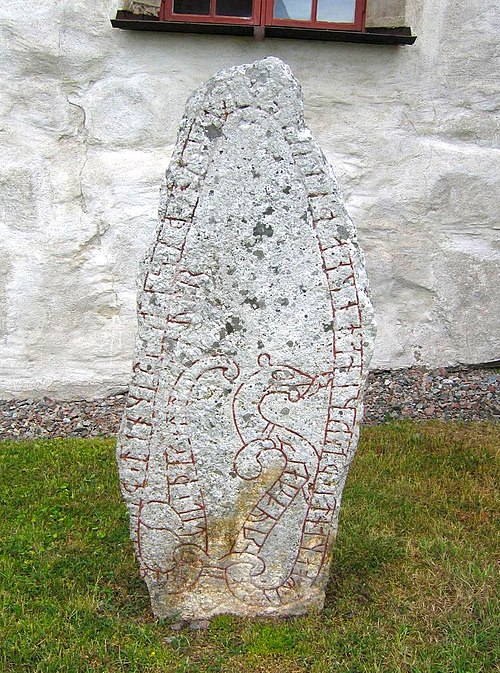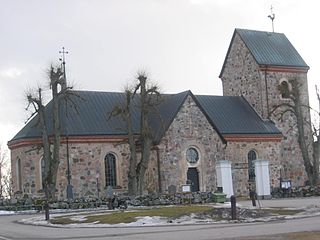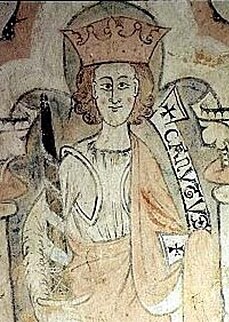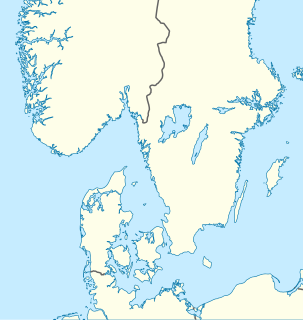
Skoglar Toste or Skoglar Tosti (there are several variations) was a legendary chieftain from the Swedish province of West Götaland. His name (skoglar, skauglar or skagul) was reportedly due to his experience in battle. [1]
Toste is mentioned in several sagas, most notable in Heimskringla . According to Snorri Sturluson, he was the father of Sigrid the Haughty. For some time he gave refuge to Harald Grenske, who later came back to woo Sigrid, only to be killed by her for his persistence. According to the sagas, Skagul Toste was also the father of Ulf Tostesson, father of Ragnvald Ulfsson and grandfather of Stenkil who became the King of Sweden in 1060. [2]

Heimskringla is the best known of the Old Norse kings' sagas. It was written in Old Norse in Iceland by the poet and historian Snorri Sturluson (1178/79–1241) ca. 1230. The name Heimskringla was first used in the 17th century, derived from the first two words of one of the manuscripts.

Snorri Sturluson was an Icelandic historian, poet, and politician. He was elected twice as lawspeaker to the Icelandic parliament, the Althing. He was the author of the Prose Edda or Younger Edda, which consists of Gylfaginning, a narrative of Norse mythology, the Skáldskaparmál, a book of poetic language, and the Háttatal, a list of verse forms. He was also the author of the Heimskringla, a history of the Norwegian kings that begins with legendary material in Ynglinga saga and moves through to early medieval Scandinavian history. For stylistic and methodological reasons, Snorri is often taken to be the author of Egil's saga.

Sigrid the Haughty, also known as Sigríð Storråda, is a queen appearing in Norse sagas as wife, first of Eric the Victorious of Sweden, then Sweyn Forkbeard of Denmark. Sigrid appears in many sagas composed generations after the events they describe, but there is no reliable evidence as to her existence as they describe her. The figure of Sigrid appears mainly in late Icelandic sagas, while more contemporary sources such as Thietmar of Merseburg and Adam of Bremen instead claim that Sweyn was married to a Polish princess, identified as Świętosława. Snorri Sturluson gives conflicting information and in one place says that Sweyn was married to Sigrid and in another that he was married to a Gunhild of Wenden.
Toste is said to have collected great riches when he demanded danegeld as he led a Viking army to England in 970. At Vallentuna, near Stockholm, the runestone of Orkesta (U 344) reads:

The Danegeld was a tax raised to pay tribute to the Viking raiders to save a land from being ravaged. It was called the geld or gafol in eleventh-century sources. It was characteristic of royal policy in both England and Francia during the ninth through eleventh centuries, collected both as tributary, to buy off the attackers, and as stipendiary, to pay the defensive forces. The term Danegeld did not appear until the early twelfth century. In Anglo-Saxon England tribute payments to the Danes was known as gafol and the levy raised to support the standing army, for the defence of the realm, was known as heregeld (army-tax). Danegeld was mostly taken by the Norsemen from Sweden and Denmark.

England is a country that is part of the United Kingdom. It shares land borders with Wales to the west and Scotland to the north-northwest. The Irish Sea lies west of England and the Celtic Sea lies to the southwest. England is separated from continental Europe by the North Sea to the east and the English Channel to the south. The country covers five-eighths of the island of Great Britain, which lies in the North Atlantic, and includes over 100 smaller islands, such as the Isles of Scilly and the Isle of Wight.

Vallentuna is a Municipality in Stockholm County, Sweden with 33,219 inhabitants in 2018. Vallentuna's cultural landscape is well preserved, and human habitation in the area has been traced back as far as the stone age. Archeological excavations in southern Vallentuna near Lilla Gävsjö uncovered remains of a stone age settlement.
in ulfr hafir onklati * Þru kialtakat Þit uas fursta Þis tusti * Þa ---Þurktil * Þa kalt knutr
Translation: "And Ulf of Borresta (Ulf) has taken three payments in England. That was the first that Toste (tusti) paid. Then Thorkell the Tall (Þurktil ) paid. Then Canute the Great (knutr) paid. [3]

Ulf of Borresta was a runemaster in the eleventh century Uppland, Sweden, and a successful Viking who returned from England three times with a share of the Danegeld. He is named after his estate which in modern Swedish is called Borresta or Bårresta.

Thorkell the Tall, also known as Thorkell the High in the Anglo-Saxon Chronicle, was a prominent member of the Jomsviking order and a notable lord. He was a son of the Scanian chieftain Strut-Harald, and a brother of Jarl Sigvaldi. Thorkell was the chief commander of the Jomvikings and the legendary stronghold, Jomsborg, on the Island of Wollin.













